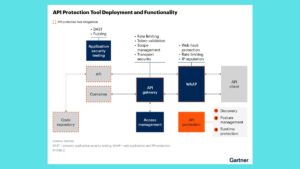Automation of HR Operations: Transforming the Future of Work

In today’s rapidly evolving business landscape, Human Resources (HR) departments are under increasing pressure to operate efficiently while delivering a high level of service to employees. As companies grow and workforce dynamics change, traditional HR processes can become cumbersome and prone to errors. To address these challenges, many organizations are turning to automation to streamline HR operations, improve productivity, and enhance employee experience. In this blog, we will explore the benefits of automating HR operations, the key areas to focus on, and best practices for successful implementation.
The Need for Automation in HR
The modern workplace is characterized by complex HR tasks, including recruitment, onboarding, payroll processing, performance management, and compliance. These functions often involve repetitive manual processes that can consume valuable time and resources. The need for automation arises from several factors:
- Increased Efficiency: Automating repetitive tasks allows HR professionals to focus on strategic initiatives rather than administrative duties. This shift can lead to improved productivity and faster decision-making.
- Data Accuracy: Manual processes are susceptible to human error, which can result in inaccurate records and compliance issues. Automation reduces the risk of errors and ensures data integrity.
- Enhanced Employee Experience: Automating HR operations can lead to a more streamlined experience for employees, providing them with quick access to information and support. This enhances overall satisfaction and engagement.
- Scalability: As organizations grow, their HR processes must scale accordingly. Automation enables HR departments to handle increased workloads without compromising service quality.
Key Areas for HR Automation
- Recruitment and Talent Acquisition
Recruitment is one of the most time-consuming tasks for HR teams. Automation can significantly improve this process by utilizing Applicant Tracking Systems (ATS) to streamline candidate sourcing, screening, and communication. Automated job postings, resume parsing, and interview scheduling can save hours of manual work, allowing HR professionals to focus on building relationships with top candidates.
- Onboarding
A well-structured onboarding process is essential for integrating new hires into the company culture. Automating onboarding tasks, such as document submission, training schedules, and benefits enrollment, ensures a smooth transition for new employees. Automated onboarding platforms can provide new hires with essential information and resources, allowing them to hit the ground running.
- Payroll and Benefits Administration
Payroll processing is a complex task that involves multiple calculations, tax withholdings, and compliance requirements. Automation can simplify payroll management, reducing errors and ensuring timely payments. Automated benefits administration allows employees to easily enroll in and manage their benefits, freeing up HR staff from handling repetitive inquiries.
- Performance Management
Performance management can be enhanced through automation by implementing tools that facilitate goal setting, feedback collection, and performance evaluations. Automated performance management systems can provide employees and managers with real-time insights, fostering a culture of continuous feedback and development.
- Employee Self-Service Portals
Implementing self-service portals empowers employees to access their personal information, such as pay stubs, benefits, and leave balances, without needing HR intervention. This not only reduces the workload on HR teams but also enhances employee satisfaction by providing quick access to essential information.
- Compliance and Reporting
HR departments must navigate a complex landscape of regulations and compliance requirements. Automation can assist in maintaining accurate records, generating reports, and tracking compliance deadlines. Automated alerts and reminders ensure that HR teams stay up-to-date with regulatory changes and avoid costly penalties.
Best Practices for Implementing HR Automation
- Identify Specific Needs
Before implementing automation, assess the specific needs of your HR department. Identify repetitive tasks that consume significant time and resources, and prioritize these areas for automation.
- Choose the Right Tools
Research and select automation tools that align with your organization’s goals and HR processes. Consider factors such as ease of use, scalability, and integration capabilities with existing systems.
- Involve Stakeholders
Engage key stakeholders, including HR staff and management, in the automation process. Their insights and feedback are invaluable in identifying pain points and ensuring successful implementation.
- Provide Training and Support
Ensure that HR professionals are trained on new automation tools and processes. Ongoing support and training are essential for maximizing the benefits of automation and ensuring that staff feel comfortable with the changes.
- Monitor and Evaluate
Regularly monitor the effectiveness of automated HR processes and gather feedback from employees. Use this information to make adjustments and improvements to enhance efficiency and user experience.
- Communicate Changes
Communicate the benefits and changes associated with HR automation to all employees. Transparency will help alleviate concerns and foster a positive reception to new processes.
The Future of HR Automation
As technology continues to evolve, the automation of HR operations will become increasingly sophisticated. Artificial intelligence (AI) and machine learning will play a significant role in enhancing automation, enabling predictive analytics, personalized employee experiences, and more intelligent decision-making.
Organizations that embrace automation in HR will not only improve their operational efficiency but also position themselves as forward-thinking employers that prioritize employee engagement and satisfaction. The future of HR is not about replacing the human element but augmenting it, allowing HR professionals to focus on strategic initiatives that drive business success.
Conclusion
The automation of HR operations is no longer a luxury; it is a necessity for organizations looking to thrive in a competitive environment. By streamlining recruitment, onboarding, payroll, performance management, and compliance, HR teams can enhance efficiency, accuracy, and employee experience.
Embracing automation not only transforms HR operations but also contributes to a more engaged and productive workforce. As businesses continue to navigate the complexities of the modern workplace, investing in HR automation will be a key driver of success in the years to come.






